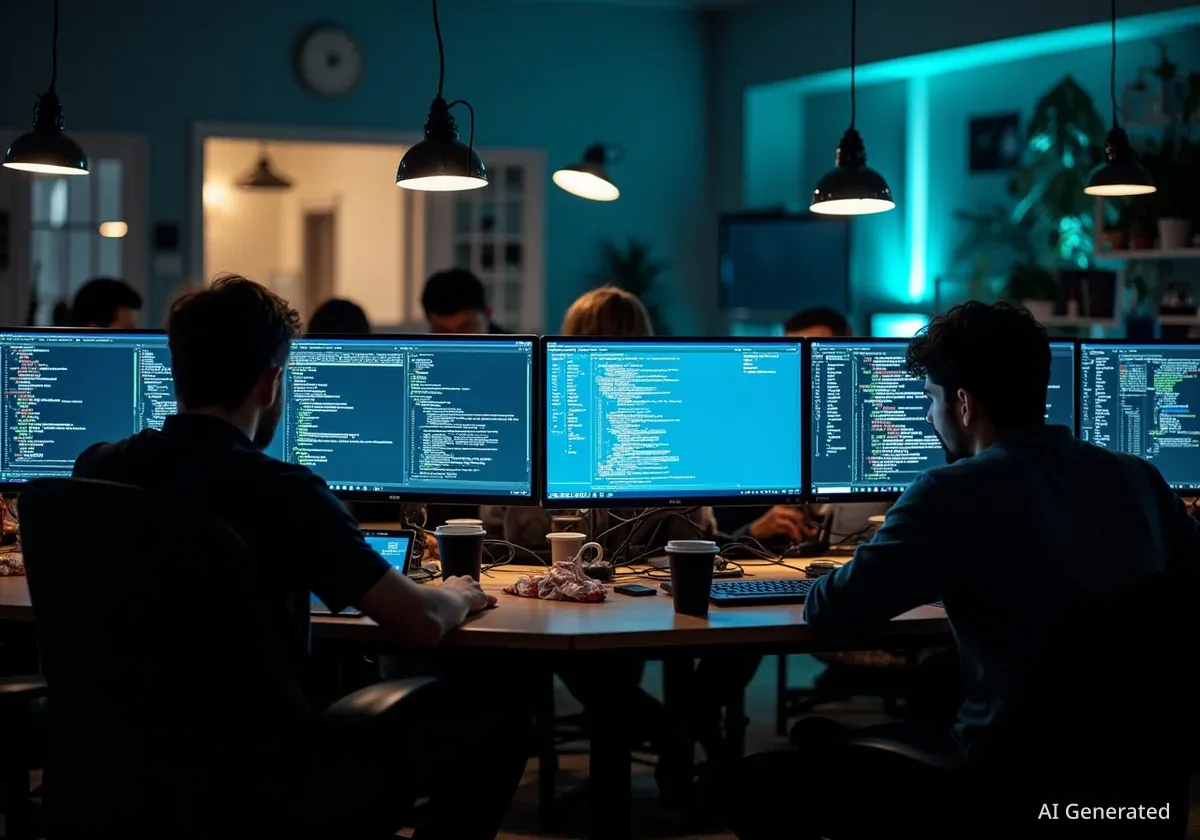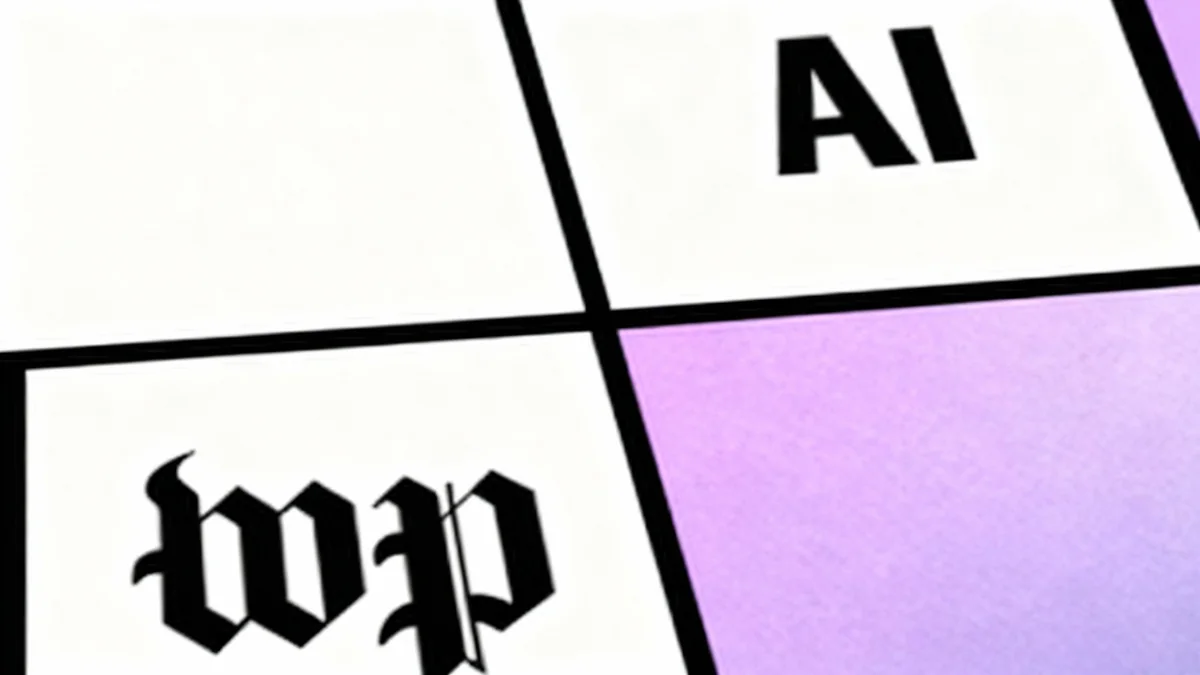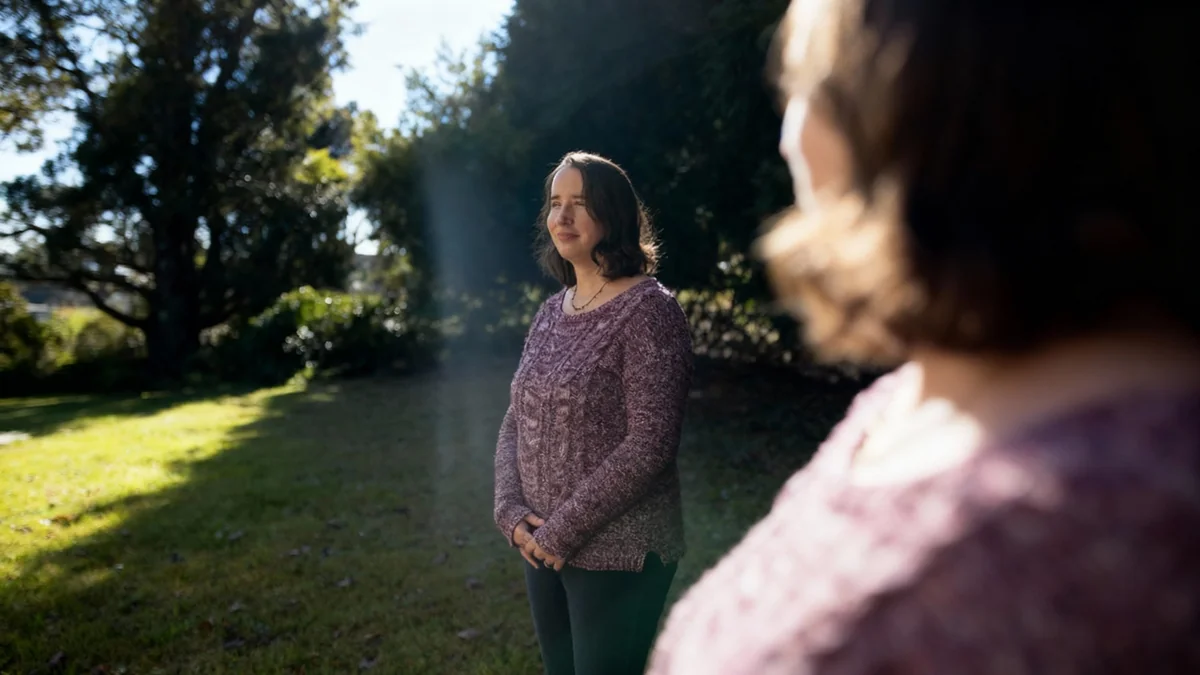In San Francisco's competitive technology landscape, a demanding work culture is re-emerging, particularly within artificial intelligence startups. Founders and their teams are adopting round-the-clock schedules, facilitated by communal living spaces known as "hacker houses." This trend pushes the boundaries of work-life integration in the pursuit of rapid innovation.
Magnus Müller, the co-founder and CEO of AI startup Browser Use, exemplifies this lifestyle. He works seven days a week, often from 7 a.m. until past midnight. His home is a hacker house in the Marina district, shared with five colleagues, where work sessions can spontaneously occur at any hour.
Key Takeaways
- A segment of the AI startup scene is reviving an intense, non-stop work ethic reminiscent of early tech booms.
- "Hacker houses" are communal living spaces that enable constant collaboration and blur the lines between work and personal life.
- This culture contrasts sharply with the broader corporate trend towards improved work-life balance and remote flexibility.
- Critics and industry observers raise concerns about the long-term sustainability of this model, citing risks of burnout and negative health impacts.
The New Reality of AI Development
The race to develop cutting-edge artificial intelligence has fostered an environment where speed is paramount. For some companies, this translates into an all-consuming work schedule. Magnus Müller's routine is a clear example of this dedication. His workdays frequently extend to 17 or 18 hours, leaving little time for activities outside of his company.
This approach is not an isolated case but part of a growing subculture within the AI sector. Driven by intense competition and the pressure to secure funding and market share, founders believe that constant work is necessary to stay ahead. The goal is to accelerate development cycles and achieve breakthroughs before rivals do.
What Are Hacker Houses?
Hacker houses are communal residences where tech professionals, typically startup founders and engineers, live and work together. These spaces are designed to foster continuous collaboration and reduce living costs in expensive cities like San Francisco. They often feature shared workspaces, whiteboards, and high-speed internet, effectively merging home and office into a single, highly productive environment.
Living with his team allows for seamless integration of work and life. According to reports, an idea can spark a team meeting around a whiteboard at 1 a.m., a scenario impossible in a traditional corporate structure. This environment is intentionally designed to maximize productivity and creative problem-solving by eliminating the commute and formal work-hour constraints.
A Deliberate Culture of Intensity
The choice to live and work in such a demanding environment is often a deliberate one. For the residents of these hacker houses, the arrangement is seen as a strategic advantage. It allows for a singular focus on building their product, free from the distractions of a conventional lifestyle. The shared purpose and camaraderie can create a powerful, motivating atmosphere.
This model is particularly attractive to early-stage startups where small, agile teams need to iterate quickly. The ability to discuss a problem over dinner or code a new feature late into the night is viewed as a critical component of their strategy. The belief is that this total immersion accelerates progress in ways that a standard 9-to-5 schedule cannot.
Work Hours and Productivity
Research from Stanford University has shown that productivity per hour declines sharply when a person works more than 50 hours a week. After 55 hours, productivity drops so much that putting in any more hours is often pointless. Those who work up to 70 hours a week are only getting the same amount of work done as those who work 55 hours.
However, this culture has drawn significant criticism. Public commentary often highlights the potential for severe burnout and the negative consequences for mental and physical health. The model is frequently compared to the "996" work culture—working from 9 a.m. to 9 p.m., six days a week—which has been criticized for its toll on employees.
Contrasting with Modern Work Trends
The rise of this hyper-intensive work culture in AI startups runs counter to the broader shifts in the global workforce. Following the pandemic, many industries have moved towards greater flexibility, including remote work, hybrid models, and discussions around a four-day work week. These trends prioritize employee well-being and work-life balance as key components of a sustainable and productive career.
"The conversation in most of the corporate world is about balance, flexibility, and avoiding burnout. In this specific niche of AI, the pendulum is swinging in the complete opposite direction," notes a labor market analyst.
This divergence creates a stark contrast. While many companies are investing in resources to support employee mental health and prevent overwork, these AI startups are building a culture where overwork is the norm. The long-term effects of this approach on talent retention and company stability remain to be seen.
The Sustainability Question
The central question surrounding this work model is its sustainability. While intense work periods can lead to short-term gains and rapid product development, the risk of burnout for founders and employees is exceptionally high. Burnout can lead to decreased productivity, loss of key talent, and can ultimately jeopardize the company's long-term success.
Industry veterans who experienced similar "hustle culture" during the dot-com boom of the late 1990s often caution against its romanticization. They point out that while some successes emerged from that era, many companies collapsed under the pressure, and many individuals suffered personal and health-related consequences.
For the current generation of AI pioneers, the challenge will be to find a balance. They must weigh the perceived need for relentless work against the proven risks of exhaustion and the importance of building a resilient team and a durable company. The success of this new wave of technology may depend not just on the brilliance of their ideas, but on their ability to sustain the human effort required to realize them.





